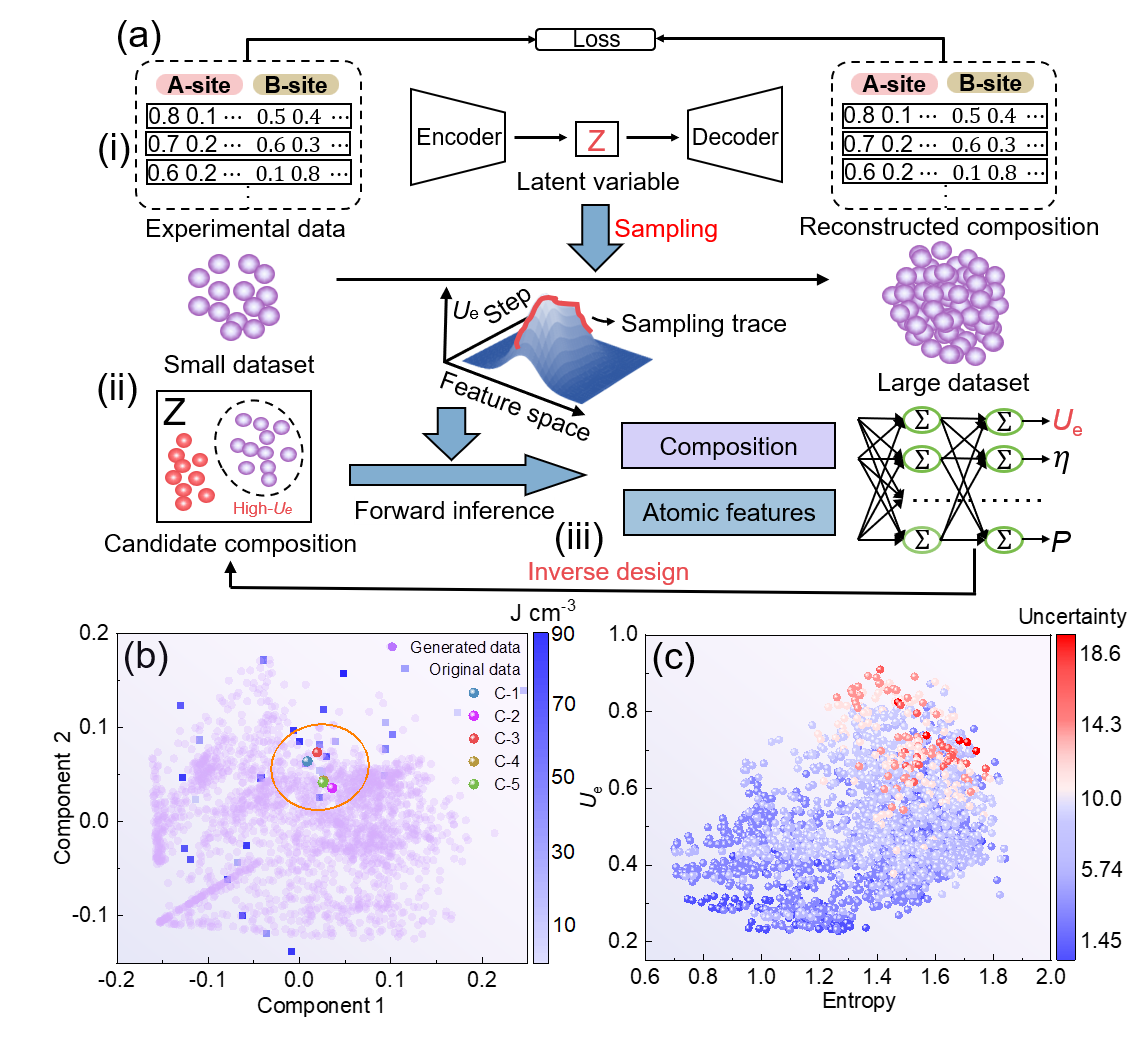
Recently, Professor Shen Zhonghui’s team, from the International School of Materials Science and Engineering (School of Materials and Microelectronics), made significant research progress in the field of AI-driven new materials research. The relevant findings had been successively published in journals such as Nature Communications, Advanced Materials, and Physical Review B.
The team is dedicated to exploring the research model of new materials development driven by AI plus high-throughput computing and focuses on the integration and coupling of electrical, mechanical, and thermal properties of dielectric materials. Besides, they conducted an integrated approach encompassing mechanistic analysis, predictive screening, and targeted experiments, which leads to on-demand design and performance breakthroughs in novel dielectric materials. Recently, the team proposed a generative learning approach to accelerate the discovery of high-entropy dielectrics, which addressed the curse of dimensionality in the design and discovery of high-entropy materials. They employed inverse design to screen out five groups of high-entropy combinations and achieved an eightfold increase in energy storage through targeted experiments. This achievement, titled "Generative learning facilitated discovery of high-entropy ceramic dielectrics for capacitive energy storage," was published in Nature Communications, with postgraduate student Li Wei being the first author of the paper and Professor Shen Zhonghui from WUT and Academician Nan Cewen from Tsinghua University being the co-corresponding authors.

Figure 1 Overview of generative learning framework for high-entropy design.
The team also conducted bidirectional intelligent optimization studies on heterogeneous BiFeO3-based energy storage dielectric materials using high-throughput phase-field simulations and machine learning. They achieved forward performance prediction and reverse structural optimization of local heterogeneous polar structures. The result, titled "Programming polarity heterogeneity of energy storage dielectrics by bidirectional intelligent design", was published in Advanced Materials, with postgraduate student Chen Xiaoxiao being the first author and Professor Shen from WUT and Academician Nan Cewen from Tsinghua University being the co-corresponding authors of the paper.

Figure 2 Bidirectional intelligent design by machine learning
In addition, the team utilized first-principles calculations, complemented by phase-field simulations, to systematically study the atomic/molecular configurations and local charge behaviors at the interfaces of perovskites, oxides, and two-dimensional material fillers with polar/non-polar polymers. This provided important theories for understanding and optimizing interface issues in polymer-based nanocomposite materials. The relevant findings, titled "Electrically variable interfaces in polymer nanocomposite dielectrics", was published in Physical Review B, with postgraduate student Luo Zhiwen being the first author and Professor Shen Zhonghui being the corresponding author of the paper.
Papers Links:
1.https://www.nature.com/articles/s41467-024-49170-8(Nature Communications)
2.https://onlinelibrary.wiley.com/doi/10.1002/adma.202311721(Advanced Materials)
3.https://journals.aps.org/prb/abstract/10.1103/PhysRevB.109.184205(Physical Review B)
Reported by: Shen Zhonghui
Rewritten by: Fan Yiwen
Edited by: Yu Mengmei, Li Tiantian
Source: International School of Materials Science and Engineering (School of Materials and Microelectronics)
|
|